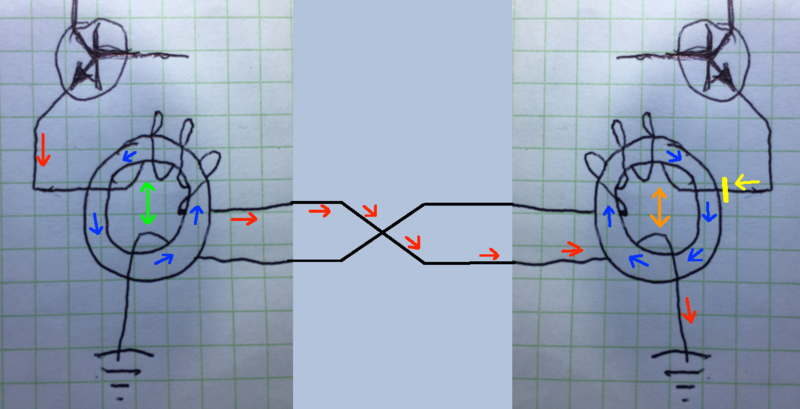Hi again

The setting part is easy. The scope shows a core is only set when the flip flop state is changed.
I am wondering if I’m correct about the following, and please let me know if anyone disagrees with the below explanation
of what happens when the circuit is powered with cores set to favour the left transistor turning on first.
Current flow on the red path through the left core meets low impedance,
as the core is already magnetised in the favourable polarity.
Transformer coupling across the green arrow is very weak because the left core was
already close to saturation, and there is little room for a change in flux density.
Current flow on the red path through the right core turns the opposite direction through
the core, and also meets low impedance because the core is also set in the opposite direction.
Transformer coupling across the orange arrow is also very weak for the same reason as
in the left core.
Current flow on the yellow path meets high impedance for more than one reason.
The right core is set so that current on the yellow path will try to reverse the magnetic
polarity, and the right core transformer turns ratio presents higher impedance for
current flow on the yellow path, especially while current is flowing on the red path,
pushing in the opposite direction.
Cheers, Brek.
